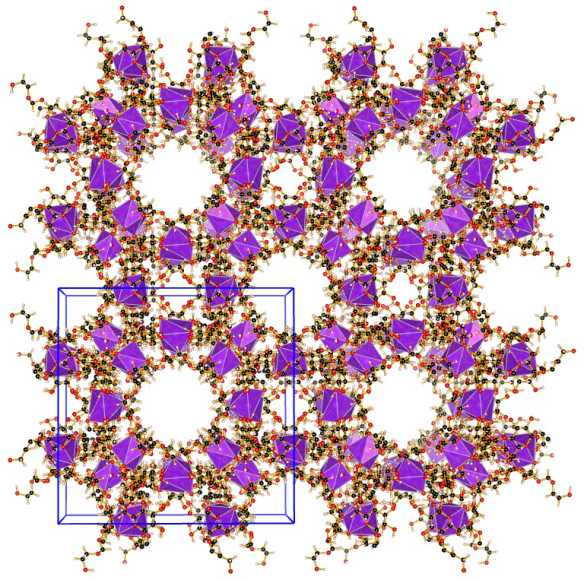Porosity on your Plate – An Edible Metal-Organic Framework
What is it?
Metal-organic frameworks (MOFs), which are porous crystals constructed from metal atoms linked together by organic molecules, have a wide range of interesting properties, including magnetic switching, catalytic activity, and the ability to store gases such as hydrogen or methane. Until a few years ago, nobody had thought to add edibility to this list.
MOFs are often synthesised from toxic metals such as cobalt or cadmium, and unpalatable linkers like terephthalate or pyrazine. In contrast, this cyclodextrin-based MOF (CD-MOF-1) has been made using food-grade ingredients. Mixing γ-cyclodextrin and potassium benzoate (food additive E212) in water, followed by the addition of Everclear grain alcohol, gives a framework that should be safe to eat. We're not sure what it tastes like, but you could potentially put all kinds of tasty molecules into the three-dimensional network of pores running through the material.
What does it look like?

An edible cyclodextrin-based metal-organic framework (CD-MOF-1). The purple polyhedra represent the potassium ions which are surrounded by eight oxygen atoms. Image generated using the VESTA (Visualisation for Electronic and STructural Analysis) software http://jp-minerals.org/vesta/en/
Where did the structure come from?
This edible MOF was created by R. Smaldone et al. in 2010. The structure can be found in entry 773709 of the Cambridge Structural database (CSD).






